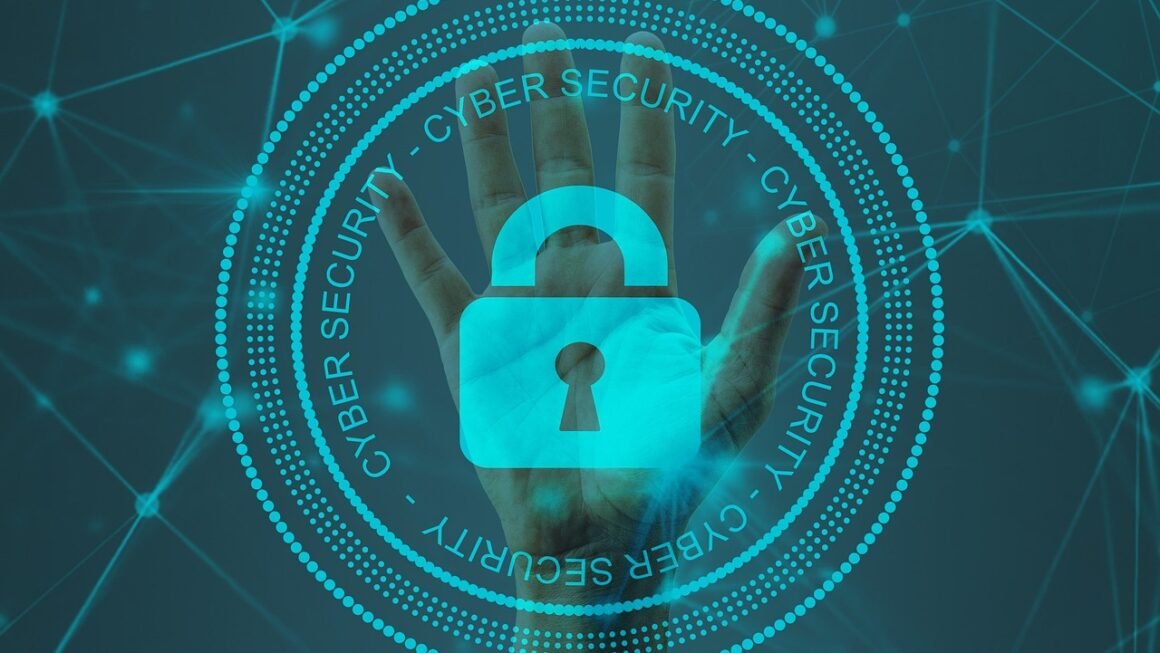Data privacy has become a paramount concern in our increasingly digital world. Every click, search, and online interaction generates data, creating a vast and complex web of personal information. Understanding your rights, responsibilities, and the implications of data privacy is crucial for navigating this landscape securely and confidently. This blog post delves into the key aspects of data privacy, exploring the importance of protecting your information and providing practical steps you can take to safeguard your digital footprint.
Understanding Data Privacy
What is Data Privacy?
Data privacy, also known as information privacy, refers to the right of individuals to control how their personal information is collected, used, and shared. It encompasses a wide range of practices and policies designed to protect sensitive data from unauthorized access, use, or disclosure.
Why is Data Privacy Important?
Data privacy is essential for several reasons:
- Protection against Identity Theft: Safeguarding personal data helps prevent identity theft, which can lead to financial loss, damage to credit scores, and emotional distress.
- Maintaining Personal Autonomy: Data privacy empowers individuals to control their personal information and make informed decisions about how it’s used.
- Building Trust: Companies that prioritize data privacy build trust with their customers, fostering long-term relationships and brand loyalty.
- Preventing Discrimination: Protecting sensitive data, such as race, religion, or sexual orientation, can help prevent discriminatory practices.
- Compliance with Regulations: Many countries have implemented data privacy regulations, such as GDPR and CCPA, that require organizations to protect personal data.
Types of Personal Data
Personal data includes any information that can be used to identify an individual, directly or indirectly. This can include:
- Personally Identifiable Information (PII): Name, address, email address, phone number, social security number.
- Financial Information: Credit card numbers, bank account details, income.
- Health Information: Medical records, insurance details.
- Online Activity: Browsing history, search queries, location data, IP address.
- Biometric Data: Fingerprints, facial recognition data.
Key Data Privacy Regulations
General Data Protection Regulation (GDPR)
The GDPR is a comprehensive data privacy law that applies to organizations operating within the European Union (EU) and the European Economic Area (EEA). Key provisions of the GDPR include:
- Right to Access: Individuals have the right to access their personal data held by an organization.
- Right to Rectification: Individuals can request that inaccurate or incomplete data be corrected.
- Right to Erasure (Right to be Forgotten): Individuals can request that their personal data be deleted under certain circumstances.
- Right to Restrict Processing: Individuals can restrict the processing of their personal data in certain situations.
- Data Portability: Individuals can request to receive their personal data in a structured, commonly used, and machine-readable format.
- Data Protection Officer (DPO): Organizations must appoint a DPO if they process large amounts of sensitive data.
- Example: A customer in the EU can request a company to provide all the personal data they have on them, correct any inaccuracies, or even delete the data altogether (if the legal conditions are met).
California Consumer Privacy Act (CCPA)
The CCPA is a California state law that grants California residents significant rights regarding their personal information. Key provisions of the CCPA include:
- Right to Know: Consumers have the right to know what personal information a business collects about them and how it is used.
- Right to Delete: Consumers have the right to request that a business delete their personal information.
- Right to Opt-Out: Consumers have the right to opt-out of the sale of their personal information.
- Right to Non-Discrimination: Businesses cannot discriminate against consumers who exercise their CCPA rights.
- Example: A California resident can request a company to disclose the categories and specific pieces of personal information they have collected about them.
Other Important Regulations
- HIPAA (Health Insurance Portability and Accountability Act): Protects the privacy of individuals’ medical information in the United States.
- PIPEDA (Personal Information Protection and Electronic Documents Act): Protects the privacy of personal information collected, used, or disclosed in the course of commercial activities in Canada.
Protecting Your Data Privacy
Strong Passwords and Authentication
- Use strong, unique passwords for each online account. A strong password should be at least 12 characters long and include a mix of uppercase and lowercase letters, numbers, and symbols.
- Enable multi-factor authentication (MFA) whenever possible. MFA adds an extra layer of security by requiring a second form of verification, such as a code sent to your phone.
- Use a password manager to generate and store your passwords securely. Popular password managers include LastPass, 1Password, and Bitwarden.
- Example: Instead of using the same password (“Password123”) for all accounts, create a unique and complex password for each, such as “G$d@#eR7tQw9Z”.
Privacy Settings and Awareness
- Review and adjust the privacy settings on your social media accounts. Limit who can see your posts, photos, and personal information.
- Be cautious about sharing personal information online. Think twice before posting sensitive information on social media or filling out online forms.
- Read privacy policies carefully before using a new website or app. Understand how your data will be collected, used, and shared.
- Use privacy-focused search engines, such as DuckDuckGo. These search engines do not track your search history or personalize search results based on your data.
- Example: On Facebook, adjust your privacy settings to limit who can see your posts to “Friends” only, and review the apps that have access to your account.
Secure Browsing and Communication
- Use a Virtual Private Network (VPN) when connecting to public Wi-Fi. A VPN encrypts your internet traffic and protects your data from eavesdropping.
- Ensure websites you visit use HTTPS (Hypertext Transfer Protocol Secure). HTTPS encrypts the communication between your browser and the website, protecting your data from interception. Look for the padlock icon in the address bar.
- Be wary of phishing emails and scams. Do not click on links or download attachments from suspicious emails.
- Use encrypted messaging apps, such as Signal or WhatsApp, for sensitive conversations. These apps encrypt your messages end-to-end, ensuring that only you and the recipient can read them.
- Example: Before entering any personal information on a website, check if the address bar starts with “https://” and displays a padlock icon.
Data Privacy in the Workplace
Employee Training
- Provide regular data privacy training to employees. This training should cover topics such as data privacy regulations, data security best practices, and how to identify and report security incidents.
- Implement clear data privacy policies and procedures. Ensure that employees understand their responsibilities for protecting personal data.
Data Security Measures
- Implement strong data security measures, such as encryption, access controls, and firewalls. These measures can help protect data from unauthorized access and cyberattacks.
- Conduct regular security audits to identify and address vulnerabilities.
- Implement a data breach response plan. This plan should outline the steps to be taken in the event of a data breach, including notifying affected individuals and regulatory authorities.
Data Minimization
- Collect only the personal data that is necessary for a specific purpose. Avoid collecting excessive or irrelevant data.
- Retain personal data only for as long as it is necessary. Delete data when it is no longer needed.
- Anonymize or pseudonymize data whenever possible. This can help reduce the risk of data breaches and protect individual privacy.
- Example: A company should only collect customer’s address if it’s necessary for shipping. If it’s not, only an email address would be sufficient. Also, older data should be archived or deleted according to the company’s retention policy.
Conclusion
Data privacy is a fundamental right and a critical responsibility in the digital age. By understanding the importance of data privacy, staying informed about relevant regulations, and taking proactive steps to protect your personal information, you can navigate the digital landscape with greater confidence and security. Organizations must also prioritize data privacy to build trust with their customers and comply with legal requirements. Remember, safeguarding data privacy is an ongoing process that requires vigilance and continuous improvement.



